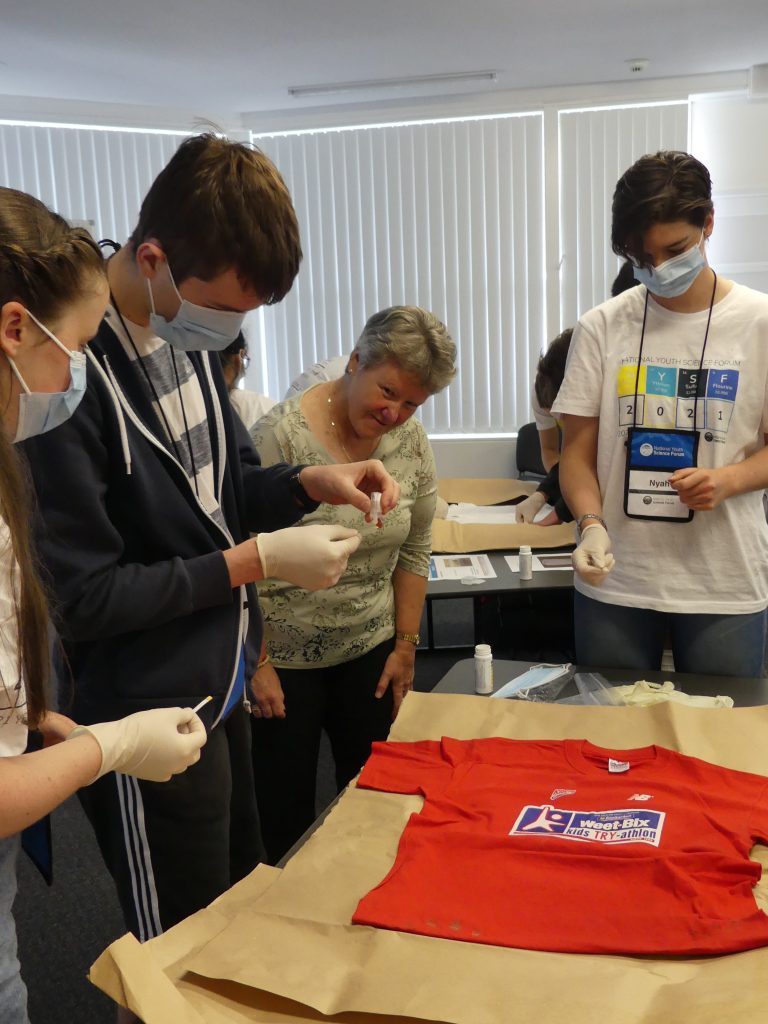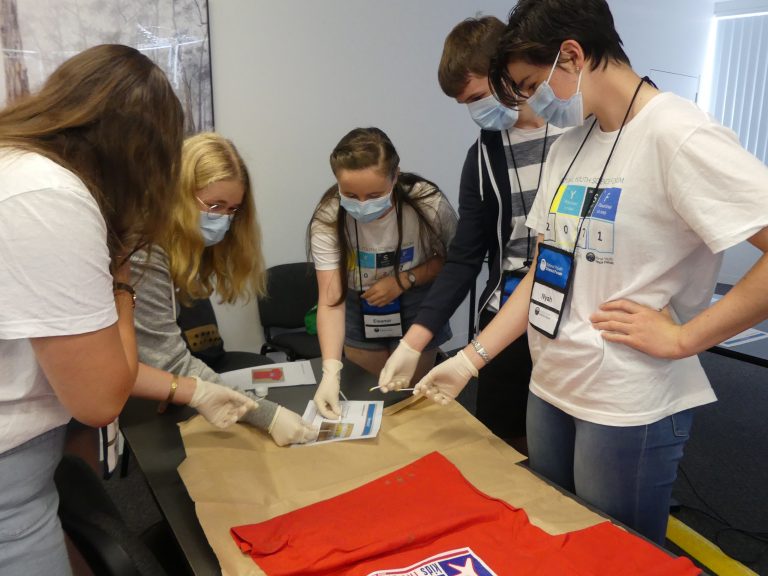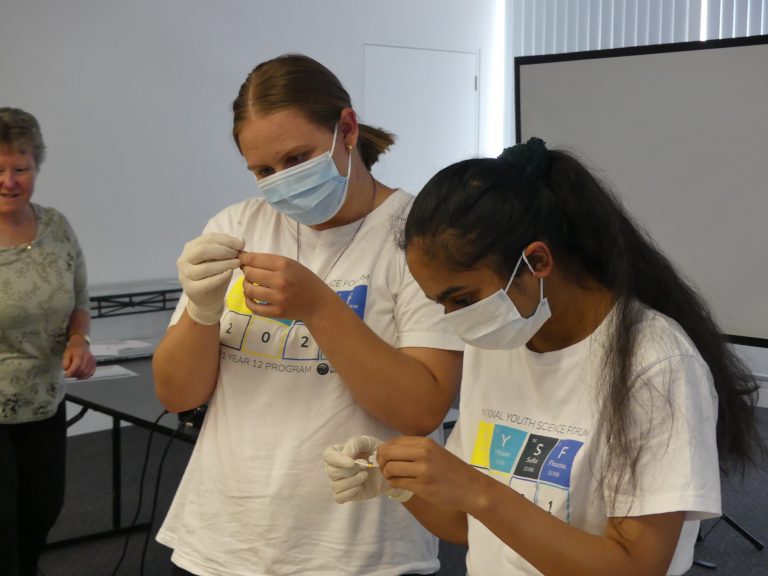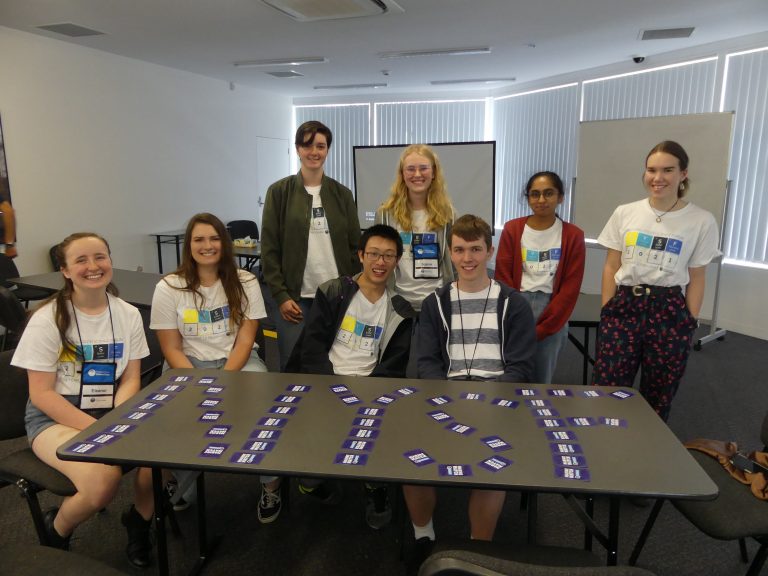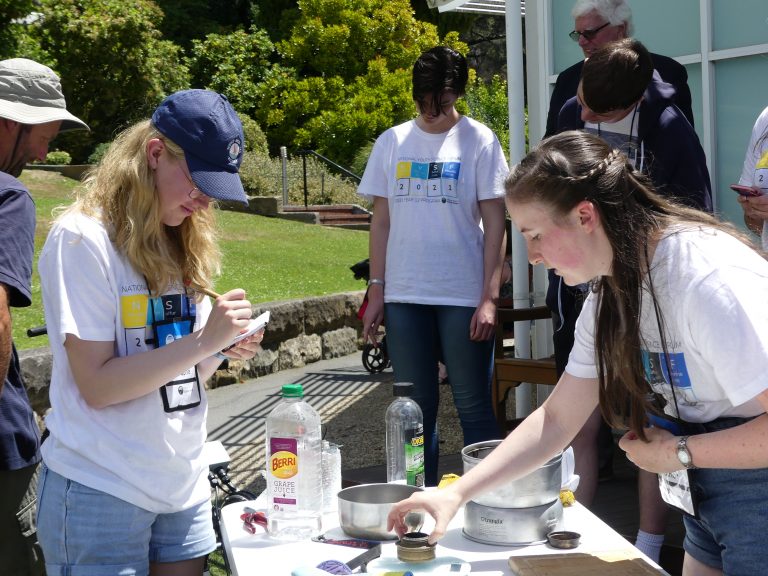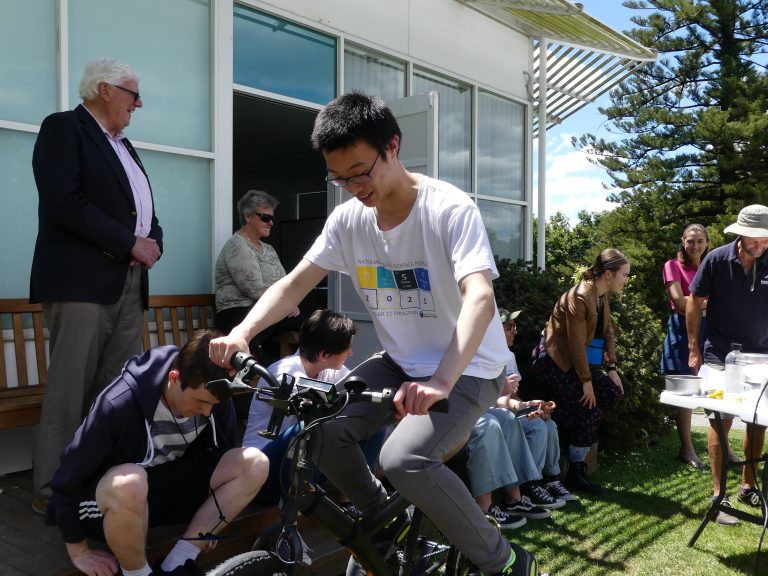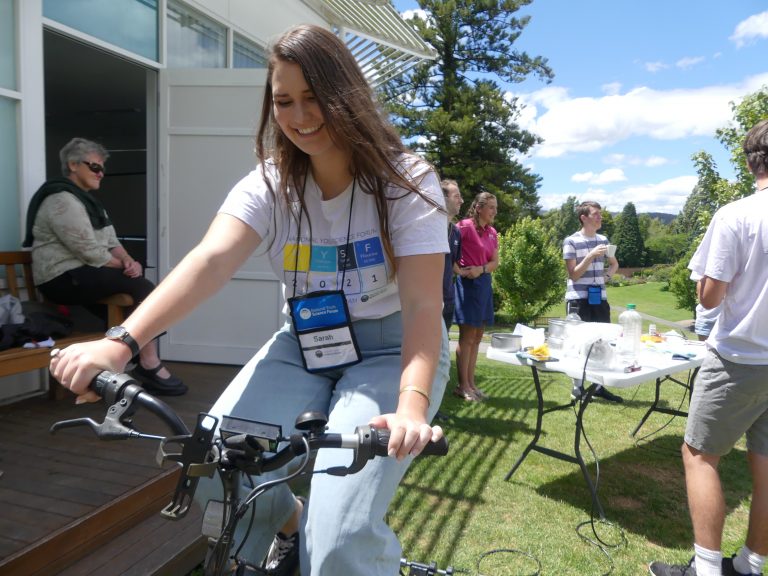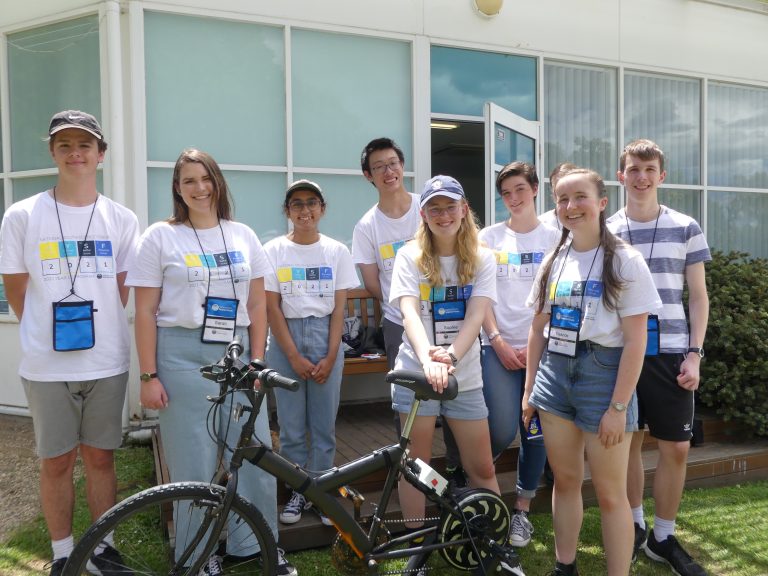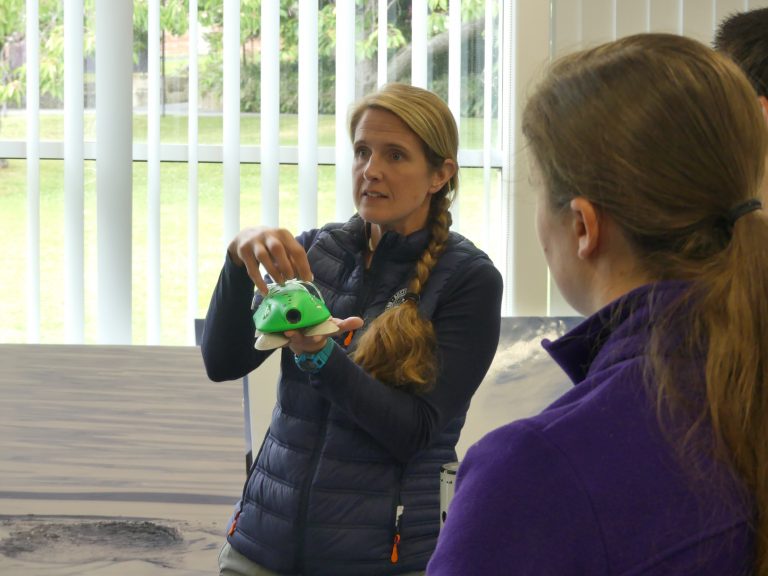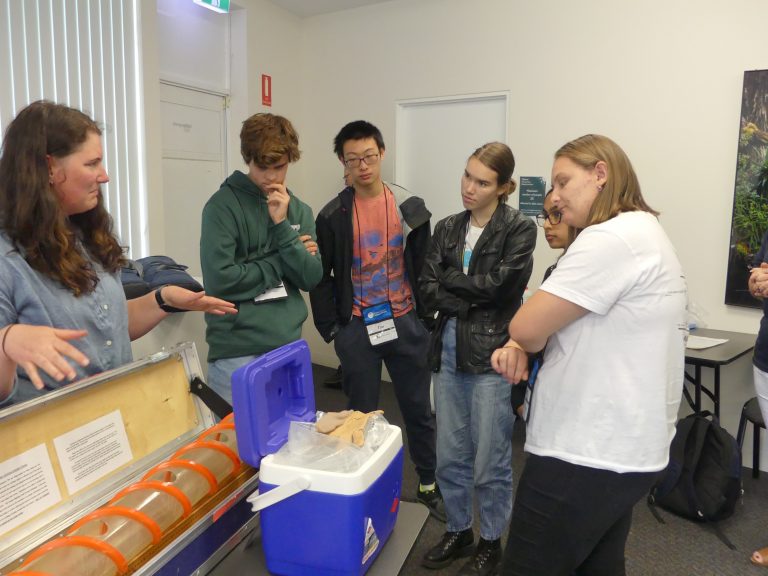Down south in Hobart, participants solved fake crimes, made hot chocolate with electricity they produced by riding a bike, and discovered how climate data is gathered from ice cores.
With Hobart the hub for Antarctic studies in Australia, participants explored the type of research that can be done in Antarctica with the Institute for Marine and Antarctic Studies and the Australian Antarctic Division.
With the Australian Antarctic Division, participants learnt what it was like to live and work in Antarctica and the breadth of research that’s conducted in the southern continent.
The highlight: participants held a real Antarctic ice core sample in their very own hands!
At the Institute for Marine and Antarctic Studies, participants learnt about the giant Tasmanian kelp forests, why they’re important in the local marine environment, and how sea urchins are threatening the kelp.
Scientists at the Institute took the group through how replanting these forests will help as they absorb large amounts of CO2 due to their fast growth.
Participants then experienced the versatile STEM careers available in Hobart with presentations from Forensic Sciences Service Tasmania (FSST) and TasNetworks.
FSST took them through the forensic biology and chemistry needed when solving crimes.
Participants got the chance to try out some scientific techniques, with forensic scientists leading them through a crime-solving simulation.
TasNetworks showed participants just how powerful energy can be – by using their leg power to make hot chocolate!
Powering a kettle with a bike gave participants an appreciation for the energy amounts we use in our day-to-day lives.

